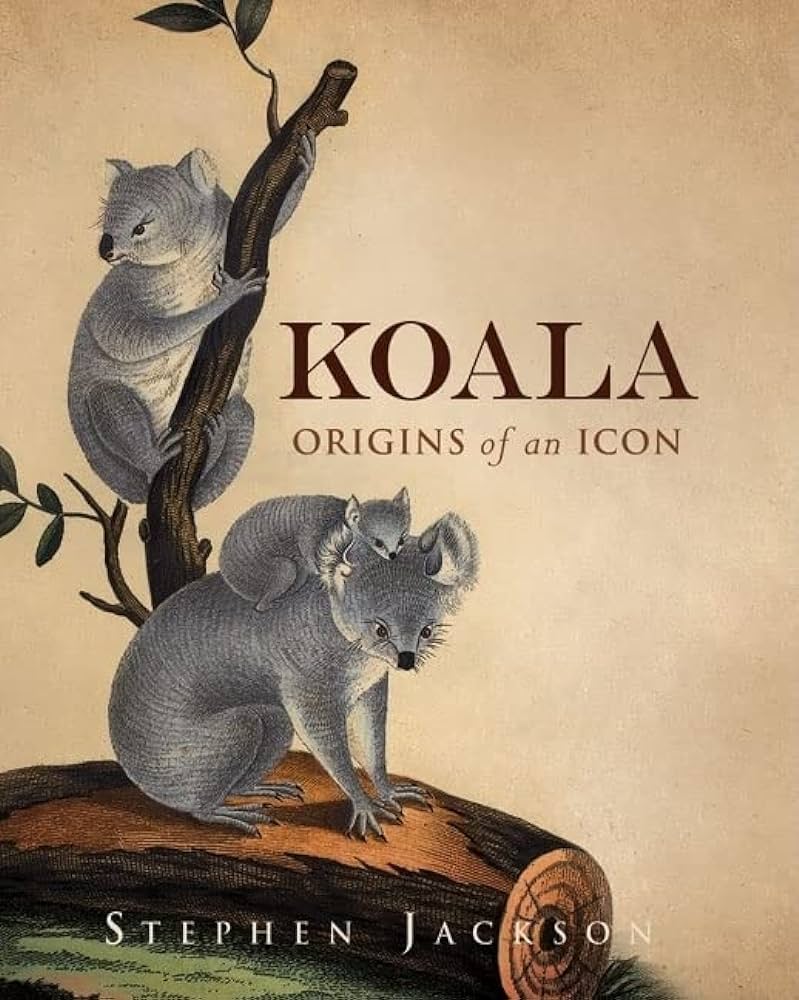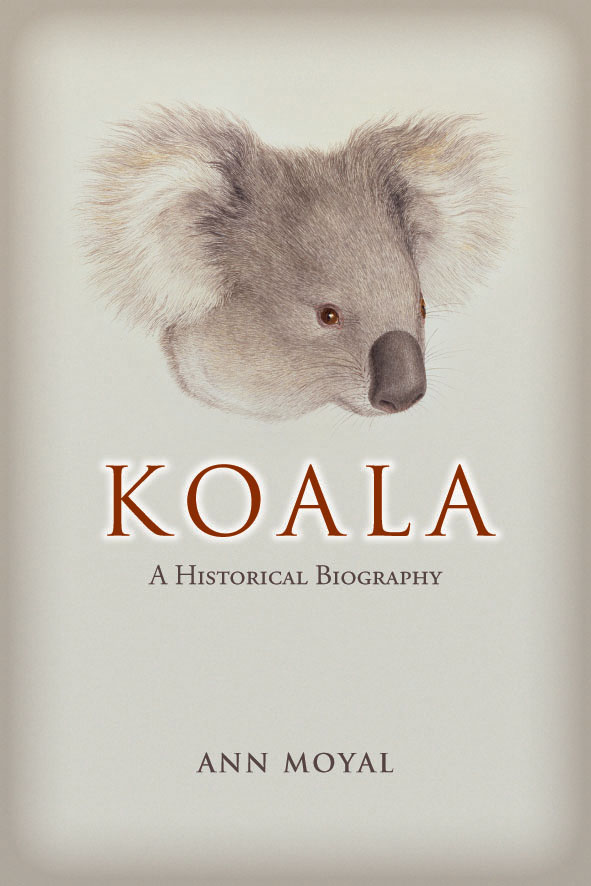
- Free Article: No
- Contents Category: Biology
- Review Article: Yes
- Article Title: Political animals
- Online Only: No
- Custom Highlight Text:
The koala is one of the most recognised animals in the world. Its beguiling, teddy-bear appearance, inoffensive nature and seeming indifference to the world around it have endeared it to adults and children worldwide. In Australia it is considered a national icon, due in no small part to two characters from popular children’s books: Bunyip Bluegum in Norman Lindsay’s evergreen The Magic Pudding, published in 1918 and never out of print since, and Blinky Bill from Dorothy Wall’s series of the same name, the first of which was published in 1933.
- Book 1 Title: Koala
- Book 1 Subtitle: Origins of an icon
- Book 1 Biblio: Jacana Books, $35 hb, 337 pp
- Book 1 Cover Small (400 x 600):

- Book 1 Cover (800 x 1200):

- Book 2 Title: Koala
- Book 2 Subtitle: A historical biography
- Book 2 Biblio: CSIRO Publishing, $39.95 hb, 256 pp
- Book 2 Cover Small (400 x 600):

- Book 2 Cover (800 x 1200):

Despite this professed affection, Australians have treated the koala with callous indifference, killing hundreds of thousands for their fur during the early twentieth century, and wiping out much of the fertile forests and woodlands that it needs for habitat. As a result, over most of its extensive eastern Australian distribution, koala populations are greatly reduced and confined to fragmented remnants of forest where adequate supplies of their favoured eucalypt foliage remain. The extreme end point of habitat fragmentation occurs in a few coastal forests and islands in Victoria and South Australia, where koala populations can grow to unsustainable levels, killing entire stands of their favoured food trees by repeatedly denuding them of foliage. Further, koalas lead an energetically precarious existence, relying on food that provides comparatively little reward for effort, and contains many potentially toxic compounds that must be neutralised. As a result, the future of our national icon is far from secure and becomes less so with every passing month without effective measures to reduce the impact of climate change. A drier south-eastern Australia will likely result in significant changes to food quality and moisture availability for the koala (koalas do not normally drink, rather they rely on moisture in the eucalypt foliage; trees stressed by years of drought, or by lowered water tables, have reduced foliage moisture).
Because of its high public profile, there has been a strong political element to koala management. In Queensland in 1927, the declaration of an open season on koalas unleashed a massive public outcry that caught the government off guard and played a role in its demise at the next election. No government has dared to authorise the killing of a koala since, though until controls on clearing native vegetation began to bite in recent years, the states and the Commonwealth happily allowed its habitat to be destroyed.
In 1986 a perceived threat to the koala from the microbial disease Chlamydiosis stimulated the formation of the Australian Koala Foundation (AKF), with the primary objective of raising funds for veterinary and ecological research. The AKF has since evolved into a high-profile conservation group that combines a curious mix of the unscientific (heavy-handed and clumsy political lobbying, questionable ‘estimates’ of Koala population size) and the sentimental (cutesy koala fundraising campaigns, overblown concern for individual sick or injured koalas, rather than the conservation of populations) with some worthwhile, evidence-based conservation projects (detailed mapping of koala habitat quality for local government, financial support for research). Both authors point out that the AKF has been both a hindrance and a help to koala conservation; a hindrance because of its aggressive tactics and the tendency to inflame situations rather than to seek workable solutions. How ironic that, among all of Australia’s celebrated biodiversity, the placid and docile koala is the only organism that has generated a pugnacious lobby group all of its own, but perhaps it is not surprising – Australians like to stick up for the underdog.
This combination of huge public interest and complex, sometimes conflicting, conservation issues, provides Australian wildlife managers with one of their most difficult challenges. It has also elevated the koala to something of a test case for flora and fauna conservation in this country – if we cannot succeed in conserving the koala, what hope is there for the remainder (read less charismatic) of our biota? These are the issues that form the backbone to these two books, released within six months of each other, and in direct competition.
Both books are similar in design: dimensions are identical (small octavo), although Stephen Jackson has nearly fifty per cent more pages. Ann Moyal benefits from a more pleasing design and higher quality production, including eight well-chosen and -reproduced historical, colour illustrations. She rightly gives prominence to the intricate and beautifully crafted illustrations of Ferdinand Bauer, who travelled with Mathew Flinders in the Investigator in 1803. Bauer produced natural history illustrations of superior artistic and scientific quality to those of the entrepreneur John Gould some forty years later, but his work gathered dust in the British Museum until its value was finally recognised in 1989 with the publication of Marlene Norst’s Ferdinand Bauer: The Australian Natural History Drawings.
Both books cover similar ground: the beliefs of Aboriginal people about the origins and natural history of the koala; the discovery of the koala by Europeans; the development of scientific understanding of its biology; the exploitation for the fur trade; the place of the koala in Australian culture; the upsurge in research aimed at better informing conservation and management efforts; the successful Victorian reintroduction programme; and recent controversy over just what are the key threats to the species and how best to manage overabundant koalas.
Jackson has a strong background in biological science and captive management; Moyal is an historian of Australian science who has published several highly regarded books, including a similar one on another Australian animal icon, Platypus: The Extraordinary Story of How a Curious Creature Baffled the World (2001). Not surprisingly, then, Jackson demonstrates a superior grasp of koala biology and ecology, and gives a detailed account of population management issues. Moyal’s coverage of the history of scientific understanding of the koala is insightful due to her grasp of the historic context. She provides the first transcription from Latin of renowned botanist Robert Brown’s description of the koala, a document that deserves much closer attention by taxonomists as it may constitute the earliest valid scientific description of the koala. However, Moyal is less confident when she tackles fields outside her specialty, such as evolution and ecology. She writes more fluently, and is more interested in discerning social and scientific trends than in the specific details. Jackson is a details man, intent on providing facts and figures, including forty-three pages of Notes and Sources, something that is missing in Moyal’s book, unlike her earlier works, which were fully referenced.
So, which to purchase? Both authors present commendable overviews of the historical, social and biological dimensions of Australia’s favourite animal. The choice really boils down to your interest. For scientific detail and a comprehensive discussion of koala issues, go to Jackson; for insightful cultural and historical commentary, Moyal takes the points. Since both represent good value for money, I suggest that both deserve a place on the bookshelves of Australian wildlife enthusiasts.


Comments powered by CComment